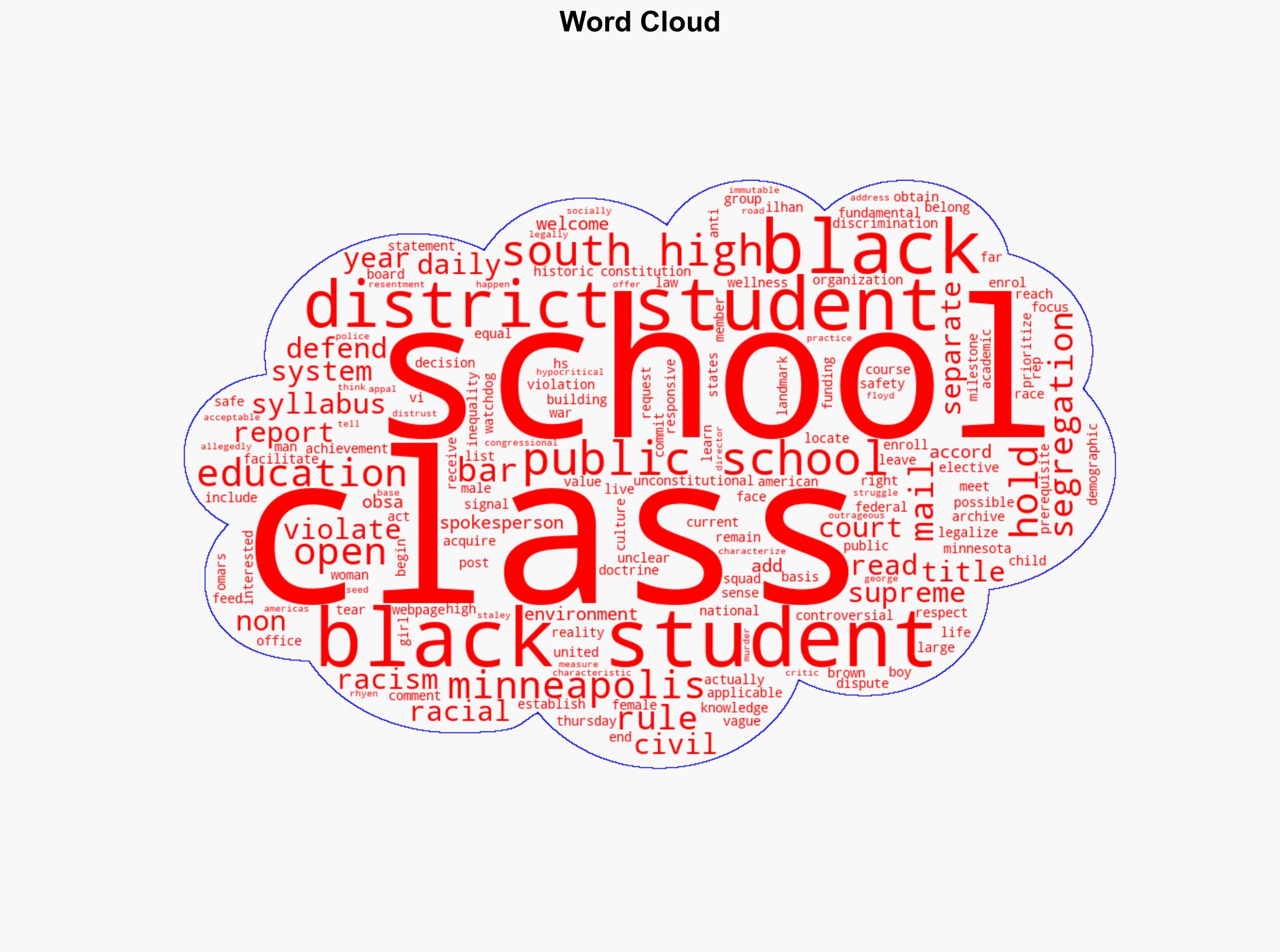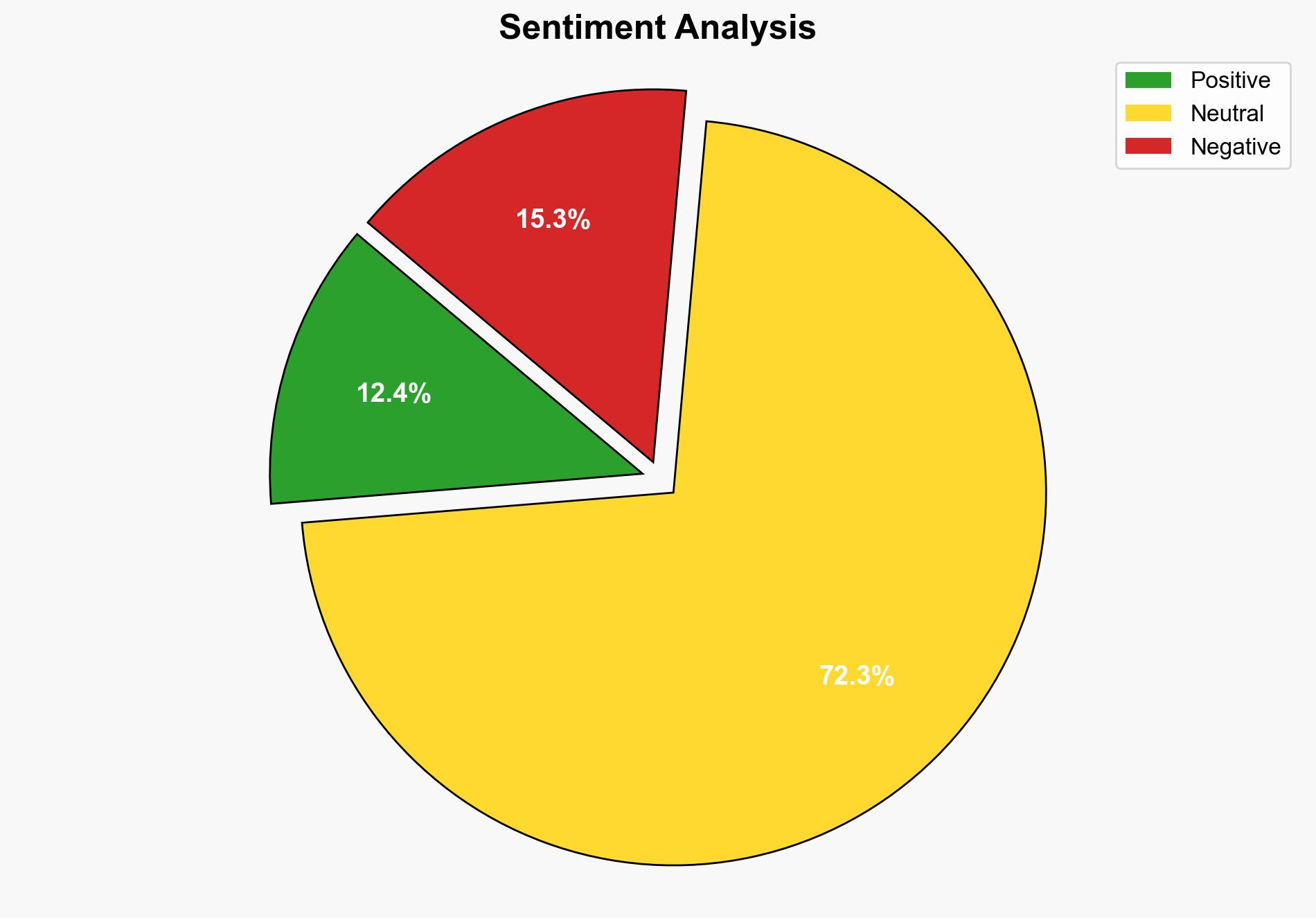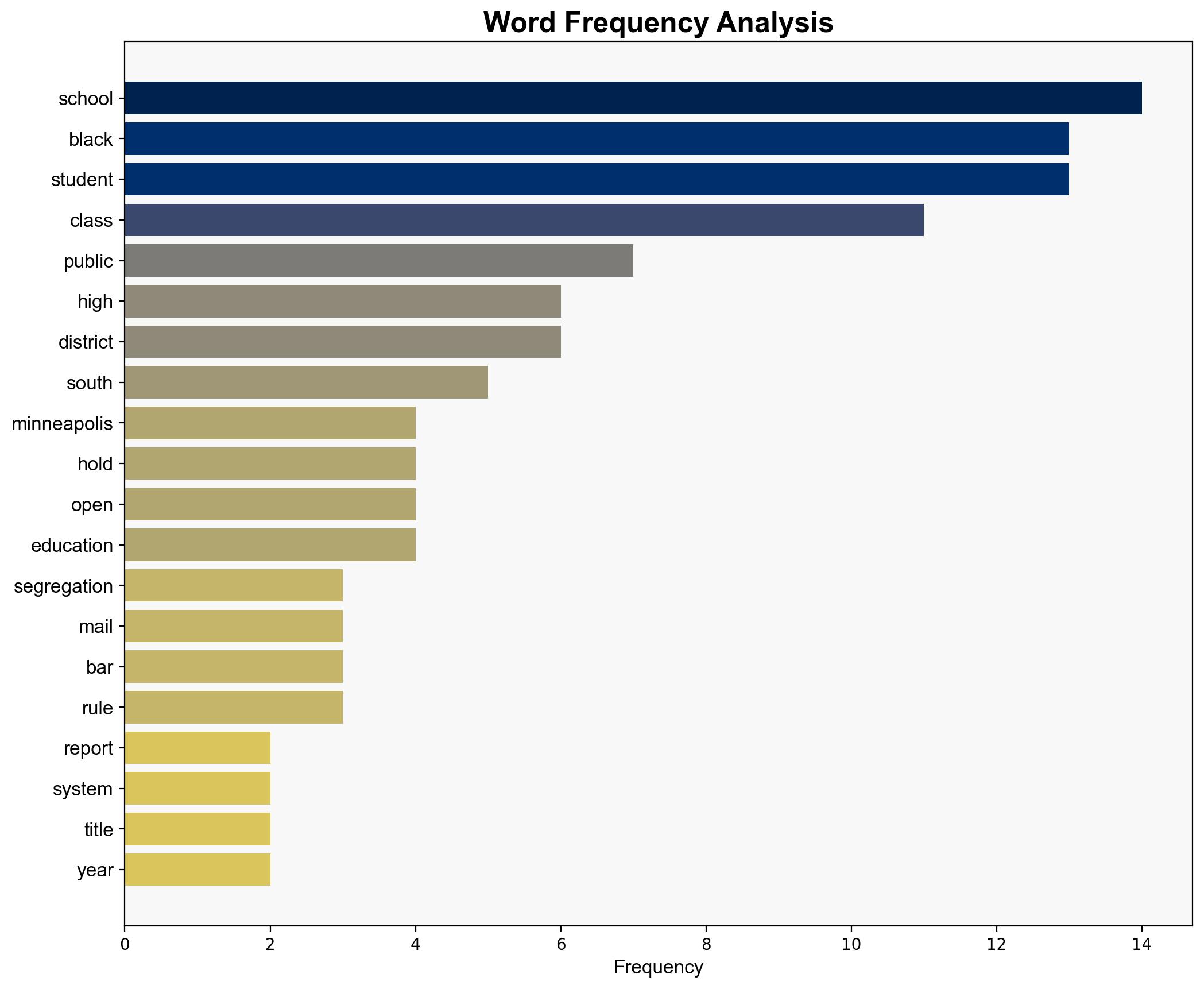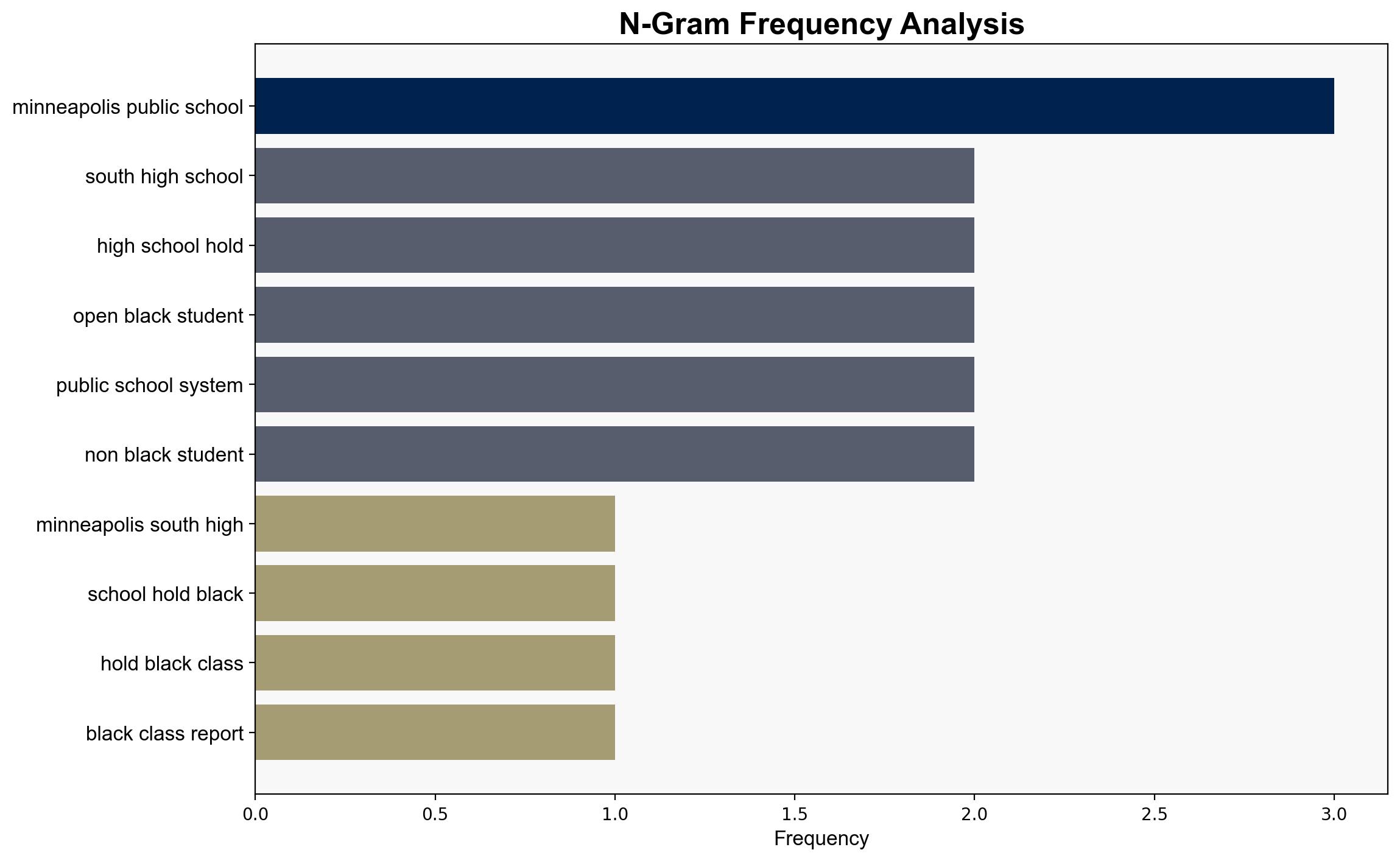Minneapolis South High School appears to have held all black classes report – New York Post
Published on: 2025-10-17
Intelligence Report: Minneapolis South High School appears to have held all black classes report – New York Post
1. BLUF (Bottom Line Up Front)
The most supported hypothesis is that Minneapolis South High School offered a class primarily targeted at black students, potentially as part of a broader initiative to address educational disparities, rather than as an act of segregation. Confidence level is moderate due to conflicting reports and lack of direct evidence. Recommended action includes a thorough investigation into the school’s policies and practices to ensure compliance with anti-discrimination laws.
2. Competing Hypotheses
1. **Hypothesis A**: The class was designed exclusively for black students, violating anti-segregation laws. This interpretation suggests a deliberate attempt to segregate students based on race, potentially reflecting systemic issues within the school district.
2. **Hypothesis B**: The class was intended to support black students by addressing specific cultural and educational needs, not to exclude non-black students. This approach aligns with efforts to enhance inclusivity and address educational disparities.
Using the Analysis of Competing Hypotheses (ACH) 2.0, Hypothesis B is better supported. The school district’s statements emphasize inclusivity and the class’s focus on cultural education, suggesting a non-exclusionary intent.
3. Key Assumptions and Red Flags
– **Assumptions**: Hypothesis A assumes intentional segregation, while Hypothesis B assumes the school’s intent was supportive and inclusive.
– **Red Flags**: Lack of clarity on whether non-black students were actually barred from enrolling. The school’s communication is vague, which could indicate either poor messaging or an attempt to obscure discriminatory practices.
– **Missing Data**: Concrete evidence of enrollment policies and actual student demographics in the class is absent.
4. Implications and Strategic Risks
– **Legal Risks**: If the class is found to be exclusionary, the school could face legal challenges under anti-discrimination laws.
– **Social Risks**: Perceived or actual segregation could exacerbate racial tensions within the community and damage the school’s reputation.
– **Educational Risks**: Missteps in addressing educational disparities could undermine efforts to support minority students and lead to broader systemic failures.
5. Recommendations and Outlook
- Conduct an independent review of the class’s enrollment policies and practices to ensure compliance with anti-discrimination laws.
- Engage with community stakeholders to clarify the class’s objectives and address concerns about inclusivity.
- Scenario-based projections:
- **Best Case**: The class is found to be inclusive, enhancing educational outcomes for black students and serving as a model for other schools.
- **Worst Case**: Legal action is taken against the school, leading to significant financial and reputational damage.
- **Most Likely**: The school clarifies its policies, avoiding legal repercussions but facing ongoing scrutiny.
6. Key Individuals and Entities
– Rhyen Staley (Defend Education Director)
– Minneapolis South High School
– Minneapolis Public School District
7. Thematic Tags
educational policy, racial equality, legal compliance, community relations




